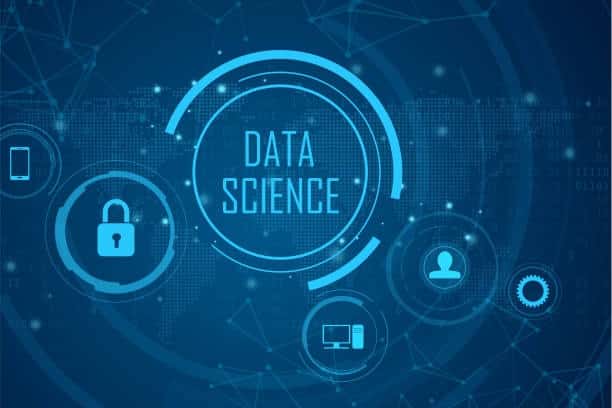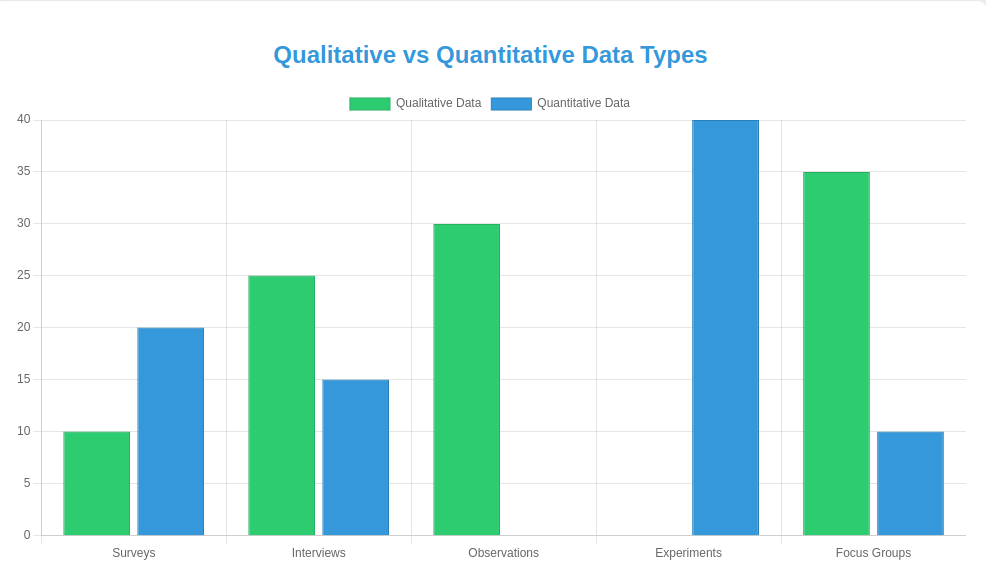The no-code movement is becoming more widespread each year. It's especially influential in the data science field. It makes the process of building applications and data analysis much quicker and simpler. Even those without technical proficiency can complete data-driven tasks.
These tools are our future! So, let us explain their main features and benefits.
The Benefits of No-Code Data Science
No-code tools changed our approach to data analysis entirely. They allow us to create models and generate insights super fast. The main aspect of these platforms is that you don't need extensive programming knowledge to operate them. Let's take a look at the benefits these tools can offer you.
1. Accessibility
No-code platforms democratize data science. They allow people without coding skills to participate in diverse activities connected to data. Anyone who has knowledge in a particular domain can conduct an analysis without the help of a professional. These instruments have a straightforward interface and predefined workflow that facilitate the entry.
2. Faster Development
Traditional workflows usually require code writing and debugging. Both these processes can take a lot of time. No-code platforms simplify them through automation. So, you can quickly complete tasks, like
- Data preprocessing
- Model building
- Deployment
It's especially beneficial if you need to make important decisions in a short period.
3. Cost-Efficiency
It can be really expensive to employ professional data scientists and developers. Not every organization has the resources to gather a full team of specialists.
These instruments reduce the need for technical personnel. So, you can save on operational expenses. Plus, you'll spend less on model building and maintenance because the development cycle becomes shorter.
4. Collaboration Across Teams
Data science projects often demand cooperation between technical and non-technical units. These tools improve their communication as they allow all team members to participate. Non-coders can
- Handle data manipulation
- Select features
- Build simple predictive models
Collaboration on data science projects can involve multiple tools and platforms, making security crucial. Using an open source password manager ensures that login credentials for various data sources are securely managed, reducing the risk of unauthorized access and keeping sensitive information protected.
5. Higher Productivity and Flexibility
The simplicity of these platforms makes the analysis more efficient. You can quickly test multiple models or hypotheses and adjust operations without going through tricky coding changes.
Plus, these platforms can handle scalable projects. This flexibility allows you to start with something basic and move to more advanced segments.
6. Lower Risk of Human Error
It is costly to debug any coding errors. No-code tools minimize this possibility. They provide pre-built elements and automated workflows. Basically, the tool does most of the work itself. So, human error usually can't even happen.
Main Elements of No-Code Data Science Tools
You already know how beneficial no-code tools can be. They make advanced data processes attainable to non-programmers. You can complete tasks without writing a single line of code. We want to tell you more about the key characteristics of these platforms that make them so great.
1. Drag-and-Drop Interface
No-code data science tools typically have a visual interface. You can perform all the tasks by simply dragging and dropping elements. This allows even beginners to design workflows for
- Data preparation
- Model training
- Visualization
You don't need to know any programming languages like Python or R. You can manipulate data clearly and logically.
2. Pre-built Models
Many of these tools offer predefined ML models and algorithms. You can easily use them for your data. These models can handle diverse tasks, like
- Classification
- Regression
- Clustering
All you have to do is upload the data and pick a model. Then you can configure basic settings like performance metrics or parameters.
3. Automated Data Cleaning
This process is an essential step in any data science project. Raw data often has missing values or inconsistencies. So, you need to clean and preprocess it before using it. No-code tools automate most of this function. They provide suggestions for enhancing data quality. So you can spend more time on analysis instead of cleaning manually.
Managing complex data workflows often requires robust solutions. Engaging data engineering services can help optimize data processing, streamline analysis, and ensure your projects run efficiently from start to finish.
4. Built-in Visualization
Also, these platforms offer advanced visualization tools. It becomes easier to understand all the outcomes they give. You can research the data and measure results with the help of
- Charts
- Graphs
- Dashboards
This functionality helps you turn complicated data patterns into understandable visuals. So, you can easily share them with stakeholders.
5. AutoML
Another key feature of many no-code tools is AutoML. It automates the selection of the right ML model. It can help you tune hyperparameters and evaluate performance. You just have to provide the details and the tool will automatically run experiments to find the best alternative. So, there will be no need for manual trial and error.
The Impact on Data Science Courses
These tools had an influence on education as well. Some data science courses are promoting this approach. It encourages more students to explore data science, regardless of their technical background.
The primary reason for this is the lower barrier to entry we mentioned before. Standard courses might be intimidating, and these platforms relieve this burden. It's really beneficial for learners in business or healthcare fields.
These tools allow to focus the purpose of courses on core concepts, like
- Data exploration
- Statistical examination
- Model assessment
So, students can spend more time learning how to frame problems and interpret outcomes.
Also, no-code tools allow students to apply the techniques they learned much earlier. They don't have to spend weeks or months understanding how to work with code. This approach helps them solidify theoretical knowledge through application.
By highlighting that many companies today are working with no-code and low-code platforms, educational institutions can keep up with current trends by integrating these tools into their programs. That way, they can make their students more prepared for the actual work environment.
Designed for all levels of expertise, we want to highlight one program in particular. No Code AI and ML program by Great Learning.
It is a great option for people from different fields and with different skill levels. It lasts for 12 weeks and covers all aspects of building data science solutions. You’ll get the chance to learn from a renowned MIT faculty.
Here are a few reasons to join:
- A unique no-code approach;
- Live support and mentorship throughout the process of studying;
- Personalized sessions;
- Practical training through relevant projects and real case studies;
- A strong e-portfolio after completing the course.
You can learn at your own pace by viewing the recorded sessions and choosing the project of your interest. The program fee is $2850 and it includes all the materials, a dedicated program manager, and a certificate upon completion.
Challenges and Limitations
We can all agree that no-code tools can offer many opportunities for data science. However, there are some challenges you have to be aware of. Each technology has its own drawbacks, and you need to understand them before you decide to start using it. So, here are some difficulties you might face.
1. Limited Customization
No-code tools often lack the flexibility that standard programming can offer. Yes, they provide preset models and workflows that are really convenient. However, sometimes these features can be constraining. These limited options may stop you from
- Customizing algorithms
- Fine-tuning parameters
- Implementing novel methods
You may still need coding for more intricate and unique situations.
2. Low Understanding of Data Science Principles
No-code platforms receive a lot of criticism because they may lead to a superficial knowledge of data science principles. Some people rely on them too much without fully grasping the logic behind model selection and statistical analysis. So, there's a higher chance of misinterpreting results or making incorrect assumptions.
The best way to handle this concern is to invest more time in learning. You can try out free courses on data science. They’re accessible to people with varying levels. You can decide between 72 alternatives that cover different aspects of data science. You’ll get continuous support from experienced mentors and a certificate upon completion.
3. Lack of Advanced Features
These tools simplify many data science tasks. Yet, they often don't have the advanced features available in coding environments. For example, tools like Python let you apply techniques, such as
- Deep learning
- NLP
- Time series forecasting
No-code ones may not support these advanced methods.
4. Difficulties with Handling Errors
We mentioned that these instruments can simplify the process of debugging. Yet, they are not as accurate as classic programming tools. These ones usually give detailed messages about each error. So, it's easier to come up with a solution. No-code environments make it hard to determine the root cause of issues. It slows down the resolution process.
5. Inadequate Model Interpretability
These platforms often prioritize ease of use over interpretability. They may produce accurate results. Yet, it might be difficult for you to interpret how the model made these predictions. It can be a huge issue when you deal with complex algorithms. Plus, it's harder to explain the results to the stakeholders.
6. Security and Privacy Considerations
Some no-code platforms are cloud-based. They don't have the same level of control or security as on-premise alternatives. It may lead to certain data privacy concerns. So, you need to be cautious when working with sensitive or proprietary information. Additionally, remember to follow all the existing privacy regulations. Organizations increasingly rely on legal AI software like LegalOn to establish and maintain compliance with privacy regulations when handling sensitive information.
7. Overreliance on Automation
Automation is one of the biggest benefits of no-code tools. However, it can be the biggest drawback as well. Some people may neglect critical judgment and rely on their suggestions too much. For example, AutoML may pick a good-performing model that doesn't fit your specific problem. So, you'll get suboptimal outcomes.
Conclusion
Proper data analysis is essential for any field. However, the data science activities are pretty complex. They usually require strong technical knowledge. So, you may need to hire additional staff and spend extra money to handle these tasks.
However, there's a way to resolve it with the help of no-code data science tools. They make all the operations more accessible and faster. These platforms have simple interfaces and many pre-built models you can easily apply. Plus, they can automate a variety of tasks. Many data science courses adopt this solution to encourage more students.
We hope that our guide was useful. Try incorporating no-code data science tools in your practices to facilitate your data analysis tasks.
FAQs
No, you do not need any programming skills to use no-code data science tools. These tools are designed with user-friendly interfaces that enable even non-technical users to perform tasks like data preprocessing, model building, and visualization without writing any code.
Yes, many no-code tools offer integration with deployment environments, allowing you to deploy machine learning models directly to production environments. This includes exporting models to cloud platforms, creating APIs, or embedding the models into applications.
Security in no-code platforms depends on the provider. While many reputable no-code tools offer enterprise-level security features, such as data encryption and access controls, users must ensure that they are following best practices for data protection. For sensitive industries like healthcare or finance, it is important to verify compliance with relevant regulations (e.g., HIPAA, GDPR).






